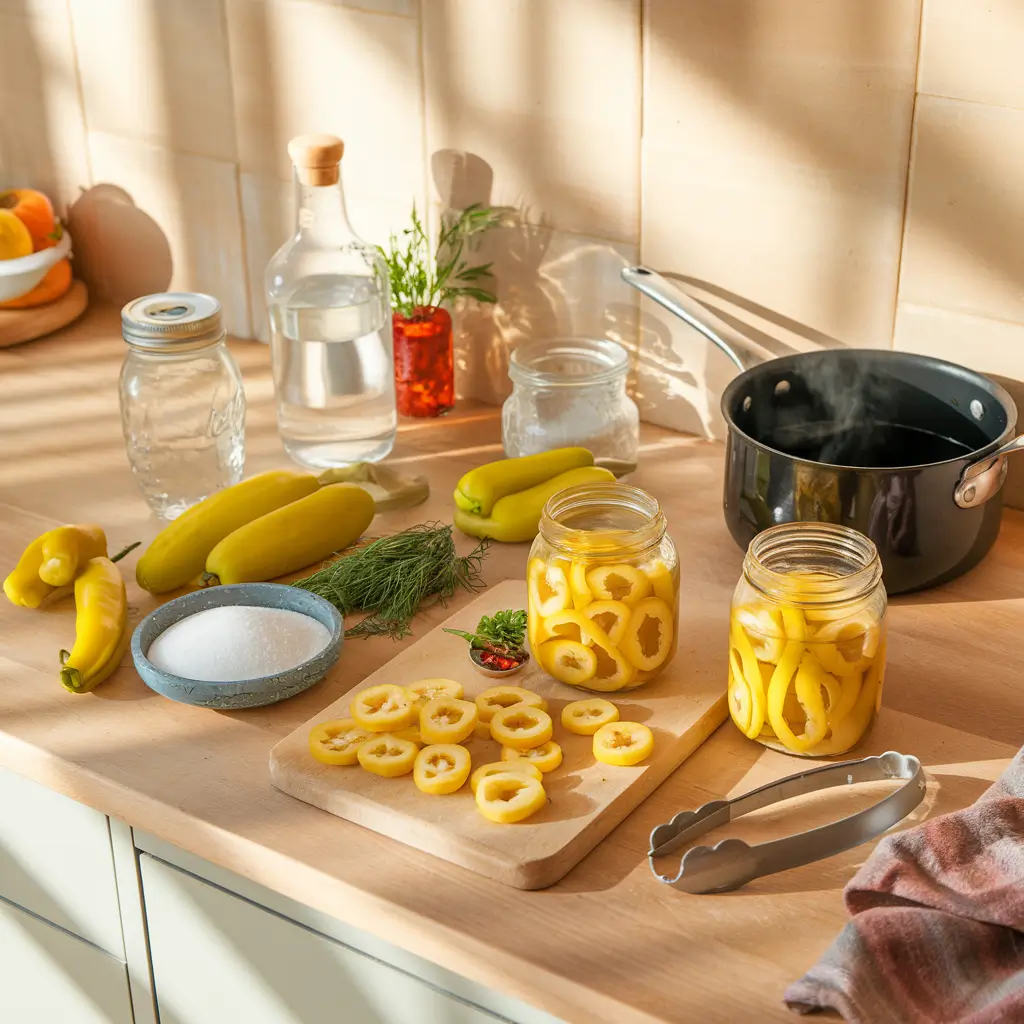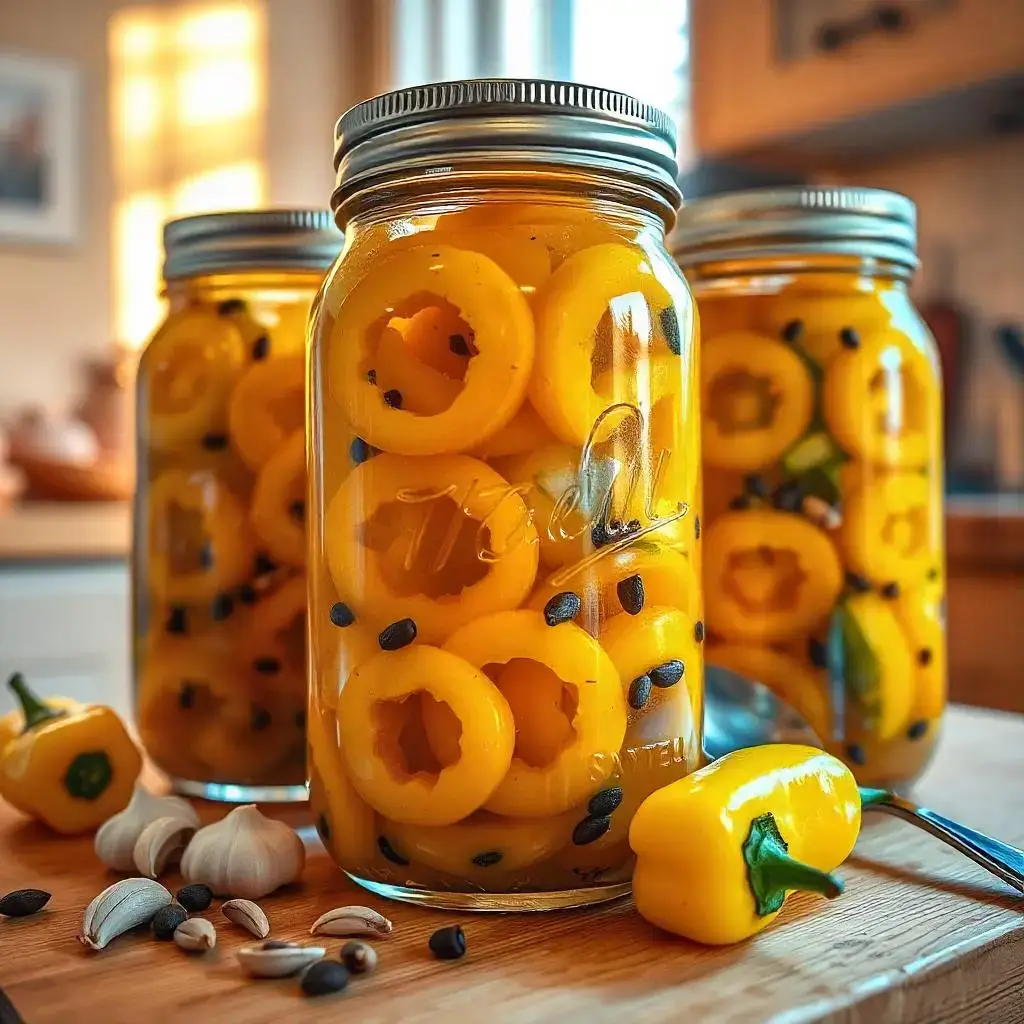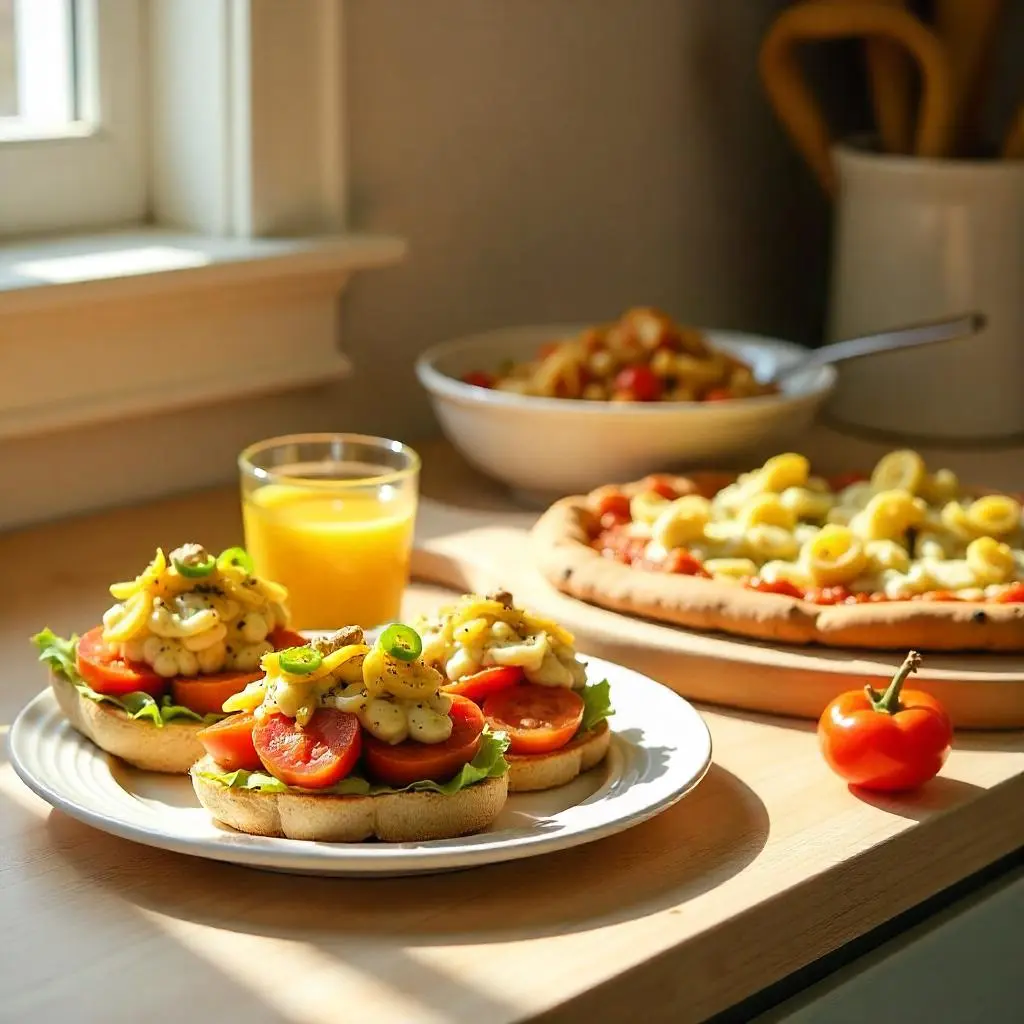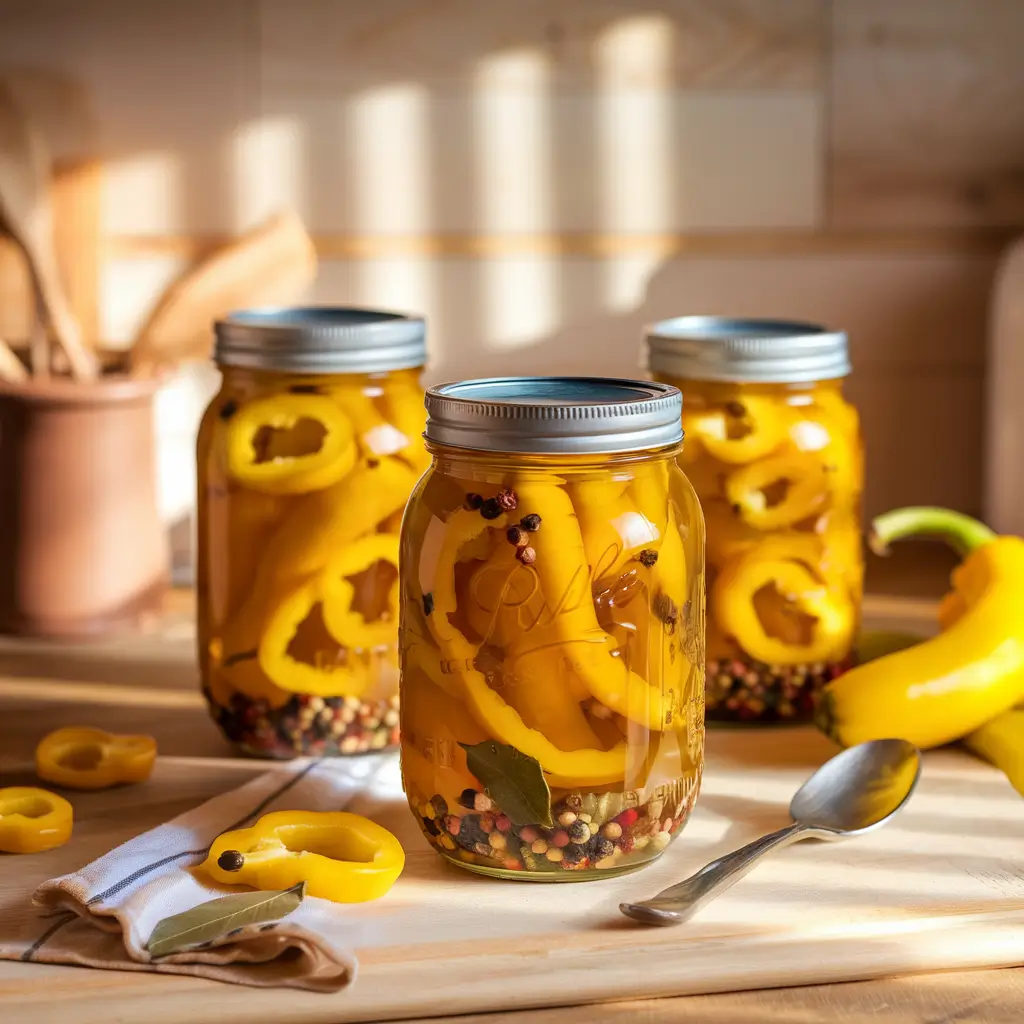Banana peppers are not only delicious but also incredibly versatile, making them a favorite ingredient for many home cooks and food enthusiasts. Whether you’re a fan of their mild, tangy sweetness or prefer the slight heat they can bring, banana peppers add a burst of flavor and color to almost any dish. Pickling these vibrant peppers elevates their taste, providing a tangy, slightly sweet kick that complements a wide variety of meals.
If you’ve ever bought pickled banana peppers from the store, you know how convenient they are for spicing up sandwiches, pizzas, burgers, and salads. But did you know that making your own pickled banana peppers at home is not only quick and easy but also allows you to customize the flavors to suit your preferences? By following a simple recipe, you can create a batch of pickled banana peppers that’s fresher, healthier, and far more delicious than anything store-bought.
In this blog post, you’ll discover a straightforward pickled banana peppers recipe that’s perfect for beginners and experts alike. You’ll learn how to make a flavorful brine, prepare the peppers for pickling, and explore creative ways to use them in your favorite dishes. Plus, I’ll share some tips for storing and flavoring your pickled banana peppers to ensure you get the most out of every batch. Let’s get started and transform your fresh banana peppers into a tangy treat you’ll love!
Step-by-Step Pickled Banana Peppers Recipe

Ingredients You’ll Need
Before diving into the recipe, it’s essential to gather all the ingredients and tools you’ll need to make this pickled banana peppers recipe. Having everything ready will make the process smooth and enjoyable, ensuring perfect results every time.
Main Ingredients
- Fresh Banana Peppers
- The star of the recipe! Choose firm, vibrant banana peppers that are free of blemishes or soft spots. You can use either sweet banana peppers for a milder flavor or hot banana peppers if you prefer some heat. Aim for around 6–8 medium-sized peppers for this recipe.
- Tip: If you like your pickled peppers on the spicier side, leave the seeds intact when slicing. For a milder option, remove the seeds and inner membranes.
- White Vinegar
- A key ingredient for the brine, white vinegar gives the pickled peppers their tangy flavor while preserving their freshness. You can substitute with apple cider vinegar for a slightly sweeter and more complex taste.
- Water
- Dilutes the vinegar to create a balanced brine that isn’t too overpowering. Ensure you use clean, filtered water for the best results.
- Granulated Sugar
- Adds a touch of sweetness to balance the tanginess of the vinegar. You can adjust the amount of sugar based on your taste preferences. For a sugar-free option, consider using a natural sweetener like honey or stevia.
- Salt
- Use kosher salt or pickling salt for the brine, as these dissolve easily and won’t cloud your solution. Avoid using iodized salt, as it can affect the flavor and clarity of the brine.
Optional Add-Ins for Flavor
- Garlic Cloves
- Add a few crushed garlic cloves for a savory, aromatic kick that complements the tanginess of the peppers.
- Black Peppercorns
- Whole peppercorns bring a subtle, earthy flavor to the brine without overpowering the peppers.
- Fresh Herbs (Dill, Oregano, or Thyme)
- Enhance the flavor of your pickled banana peppers with fresh herbs. Dill is a classic choice, but oregano or thyme can add unique depth to the brine.
- Crushed Red Pepper Flakes
- For those who love a spicy twist, a pinch of red pepper flakes will add just the right amount of heat to the pickled peppers.
Tools You’ll Need
- Glass Jars with Lids
- Use sterilized glass jars to store your pickled banana peppers. Mason jars are an excellent choice as they seal tightly, preserving the peppers’ freshness.
- Saucepan
- Necessary for heating the brine and ensuring all the ingredients dissolve evenly.
- Funnel
- Makes it easier to pour the hot brine into the jars without spilling.
- Tongs
- Handy for handling the sliced banana peppers and packing them into jars without getting brine on your hands.
By having all these ingredients and tools ready, you’ll be well-prepared to create a batch of flavorful, tangy pickled banana peppers that you can enjoy in countless dishes. These simple ingredients come together to make something truly special, and the optional add-ins allow you to customize the recipe to suit your taste. Ready to get started? Let’s move on to preparing the peppers and creating the brine!
How to Prepare the Peppers
Preparing the banana peppers is a crucial step in ensuring your pickled banana peppers recipe turns out perfectly. Proper preparation allows the brine to fully infuse the peppers, giving them their signature tangy and slightly sweet flavor. Follow these simple steps to get your peppers ready for pickling:
1. Wash the Peppers Thoroughly
- Begin by washing your fresh banana peppers under cold running water. This step removes any dirt, pesticides, or debris from the surface.
- Use a vegetable brush to gently scrub the peppers if needed, especially near the stems.
Pro Tip: Dry the peppers completely with a clean kitchen towel to prevent excess moisture from diluting the brine.
2. Slice or Prepare the Peppers
- For Sliced Pickled Banana Peppers:
- Use a sharp knife to cut the peppers into thin rings. Aim for uniform slices so they pickle evenly.
- Decide whether to keep the seeds. Keeping them will add a touch of heat, while removing them creates a milder flavor. Use the tip of the knife or a small spoon to scrape out the seeds if desired.
- For Whole Pickled Banana Peppers:
- If you prefer whole pickled peppers, remove the stems and leave the seeds intact for added texture and flavor.
- Prick each pepper a few times with a fork or skewer to allow the brine to penetrate fully.
Pro Tip: Always handle peppers carefully, especially if they are hot varieties, as the capsaicin can irritate your skin. Wear gloves if you’re working with spicy banana peppers.
3. Remove Stems and Imperfections
- Trim off any bruised or discolored parts of the peppers.
- For a neater appearance, cut off the stem end of each pepper (optional).
4. Arrange the Peppers for Pickling
- If slicing, stack the pepper rings neatly into sterilized glass jars, packing them tightly without crushing.
- For whole peppers, carefully place them into the jars, leaving a small amount of space at the top to allow the brine to cover them completely.
Pro Tip: Layer the peppers with optional flavor enhancers like garlic cloves, dill sprigs, or chili flakes for a more dynamic taste.
Properly preparing the peppers is the foundation of a successful pickling process. Whether you choose to pickle them whole or sliced, these simple preparation steps will ensure your banana peppers absorb the brine evenly and develop their signature tangy, flavorful profile. Ready for the next step? Let’s move on to creating the brine and assembling your jars!
Making the Brine and Pickling
The brine is the heart of any great pickled banana peppers recipe. It’s what gives your peppers that tangy, slightly sweet, and irresistible flavor. Follow these steps to create a perfectly balanced brine and start the pickling process:
1. Gather Your Brine Ingredients
To make the brine, you’ll need:
- White Vinegar (1 cup): Provides the tangy base for the pickling process. You can substitute apple cider vinegar for a sweeter, fruitier taste.
- Water (1 cup): Dilutes the vinegar to ensure a balanced flavor.
- Sugar (2 tablespoons): Adds a subtle sweetness to complement the tanginess.
- Salt (1 tablespoon): Enhances flavor and acts as a natural preservative. Use kosher or pickling salt for the best results.
- Optional Add-Ins: Garlic cloves, black peppercorns, dill, chili flakes, or mustard seeds for extra flavor.
2. Heat the Brine
- In a medium-sized saucepan, combine the vinegar, water, sugar, and salt. Stir well to dissolve the sugar and salt completely.
- Place the saucepan over medium heat and bring the mixture to a gentle boil. This step helps to meld the flavors and ensures the brine is hot enough to properly pickle the peppers.
- If using optional add-ins (like garlic or chili flakes), add them to the saucepan while the brine heats.
Pro Tip: Avoid over-boiling the brine, as this can alter the flavor balance. A gentle simmer is perfect.
3. Pour the Brine Over the Peppers
- Remove the saucepan from the heat and carefully ladle the hot brine into the prepared jars filled with banana peppers. Use a funnel to avoid spills and ensure the brine evenly covers the peppers.
- Leave about 1/2 inch of space at the top of each jar to allow for expansion.
- If desired, add additional flavor elements directly to the jars, such as dill sprigs or garlic cloves.
Pro Tip: Gently tap the jars on the counter to release any trapped air bubbles before sealing.
4. Seal the Jars
- Place the lids on the jars and seal tightly. If you’re making refrigerator pickles, there’s no need to process the jars further. However, if you’d like to preserve them for longer, you can process the jars in a hot water bath.
5. Let the Pickles Rest
- Allow the jars to cool at room temperature before storing them in the refrigerator.
- For best results, let the pickled banana peppers rest for at least 24 hours to absorb the brine’s flavors. They will taste even better after a few days.
Pro Tip: Label the jars with the preparation date so you know when they’re ready to enjoy.
Making the brine and pickling the banana peppers is a simple yet rewarding process that transforms fresh produce into tangy, flavorful condiments. Whether you’re topping a sandwich, adding zest to a salad, or spicing up a pizza, your homemade pickled banana peppers will quickly become a household favorite! Ready to serve? Let’s explore some creative ways to enjoy them.
Tips and Creative Ideas for Pickled Banana Peppers
Pickled banana peppers are a versatile addition to your kitchen, but their potential doesn’t end with the basic recipe. With a few tips and creative ideas, you can enhance their flavor, ensure proper storage, and incorporate them into a variety of dishes. Let’s dive into how to elevate your pickled banana peppers!

1. Flavor Variations to Try
Customize your pickled banana peppers with these simple additions to the brine:
- Add Some Heat:
- Include red pepper flakes, jalapeño slices, or whole dried chilies to spice things up.
- Perfect for those who enjoy a kick of heat in their pickles.
- Sweeten the Brine:
- Use honey, maple syrup, or more sugar for a sweeter version of pickled peppers.
- This works wonderfully as a topping for roasted vegetables or as part of a sweet-and-savory salad.
- Herbal Infusion:
- Add dill, thyme, or oregano sprigs to create an herbaceous flavor profile.
- Ideal for Mediterranean-inspired dishes like gyros or antipasto platters.
- Garlic Lovers:
- Toss in a few smashed garlic cloves for a savory depth that pairs well with pizza and pasta.
2. How to Store Your Pickled Banana Peppers
Proper storage ensures that your pickled banana peppers stay fresh and flavorful:
- Refrigerator Storage (Quick Pickles):
- Keep your pickled banana peppers in an airtight glass jar and store them in the fridge for up to 4 weeks.
- Always use clean utensils to remove peppers to prevent contamination.
- Canning for Longer Shelf Life:
- If you want your pickled banana peppers to last longer, use a water bath canning method to seal the jars.
- Properly canned pickled peppers can last up to a year when stored in a cool, dark place.
Pro Tip: Label each jar with the date of preparation so you can track their freshness.
3. Creative Ways to Use Pickled Banana Peppers

Add tangy goodness to your favorite dishes with these creative ideas:
- As a Topping:
- Sprinkle pickled banana peppers over sandwiches, burgers, or hot dogs for a zesty kick.
- Use them as a pizza topping alongside pepperoni, sausage, or veggies.
- In Salads and Wraps:
- Toss pickled banana peppers into a Greek salad or grain bowl for added flavor and crunch.
- Add them to wraps or tacos for a tangy contrast to rich fillings.
- On Charcuterie Boards:
- Include pickled banana peppers as part of a cheese and meat platter.
- Their bright flavor pairs well with creamy cheeses and cured meats.
- In Soups and Stews:
- Stir pickled banana peppers into hearty soups like chili or vegetable stew to add brightness.
- Use them as a garnish for creamy soups to cut through the richness.
- In Pasta and Rice Dishes:
- Mix them into pasta salads for a flavorful twist.
- Add to risotto or pilaf for a burst of tangy flavor.
Pickled banana peppers are as versatile as they are flavorful. Whether you’re looking to spice things up, add a touch of sweetness, or infuse your dishes with vibrant tanginess, these tips and ideas will ensure you make the most of your homemade pickled peppers. Ready to serve? Let the creativity flow!
Chef Adam’s Notes on Pickling Banana Peppers
When making pickled banana peppers, selecting the right peppers is key. Always choose firm, vibrant banana peppers free of blemishes for the best results. Freshness matters, as it enhances both the texture and flavor of your final pickled product.
The brine is the heart of the recipe, and small tweaks can make a big difference. For a more robust flavor, add ingredients like crushed garlic, dill sprigs, or a pinch of red pepper flakes. If you prefer a sweeter pickle, increase the sugar slightly or experiment with honey for a natural sweetness. Remember, balance is essential—too much vinegar or sugar can overpower the natural taste of the peppers.
When slicing the peppers, uniformity is crucial. Evenly sliced rings not only look great in the jar but also pickle evenly, ensuring consistent flavor and texture. For those who enjoy a bit of spice, leave the seeds intact, but if you prefer a milder pickle, removing them will mellow out the heat.
For storage, always ensure your jars are sterilized and sealed properly. Refrigerator pickles are quick and easy, but if you’re looking for a longer shelf life, a water bath canning method is ideal. Proper labeling is a simple yet effective way to track freshness and enjoy your pickled banana peppers at their peak.
Lastly, don’t be afraid to get creative with how you use your pickled banana peppers. They’re fantastic as a topping for pizzas, burgers, and salads, but they can also add a burst of flavor to soups, grain bowls, or charcuterie boards. With just a little effort, you’ll have a versatile, delicious condiment that enhances almost any dish.
If you’re looking for more versatile and delicious recipes to try, don’t miss our Easy Pineapple Casserole Recipe for Your Next Family Dinner. It’s the perfect sweet-and-savory dish to complement any meal.

😋😋😋😋😋